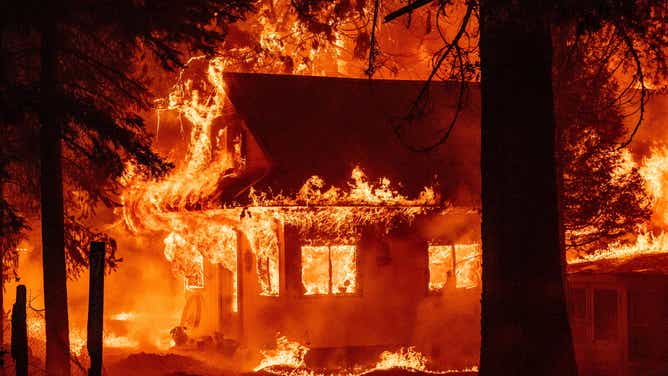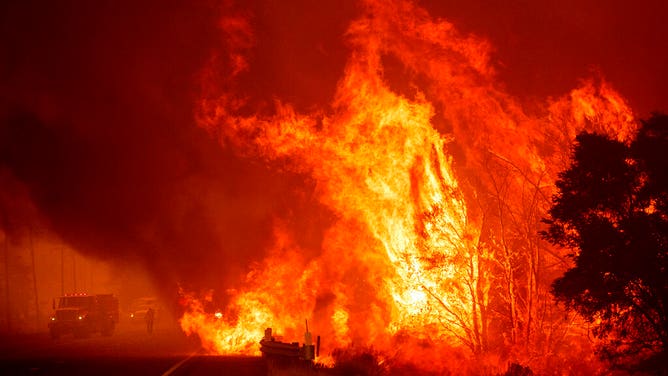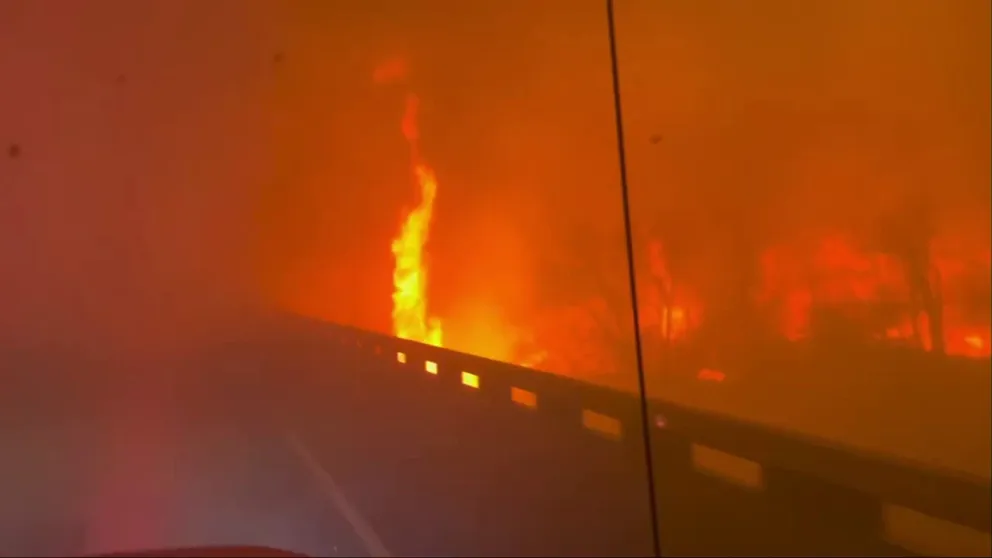Wildfire risk up as humidity declines, temperatures rise in the Southwest, study shows
The Southwest is becoming warmer and drier over time which ratchets up wildfire risk.
Firefighters drive through leaping flames in fire-hit Texas Panhandle
The intensity of the fire in the Texas Panhandle on Tuesday was captured in a video recorded by a crewmember from Greenville Fire-Rescue. The video shows their truck driving through the flames, sparks, and smoke during their response in the area.
Firefighters are in for bigger battles in the future, according to recent research. Over the past 50 years, wildfire burn areas have dramatically increased as temperatures are rising and humidity is going down across the Southwest.
"Since the turn of the millennium, the Southwest has generally shifted into a warmer and drier state, and this increase in aridity coincided with an increase in forest area burned," said the study posted in the Journal of Hydrometeorology.
The authors called the increase in burned areas across the West and Southwest exponential.
WHY FIREFIGHTERS ARE FIGHTING WILDFIRES WITH FIRE

File: A home burns as the Dixie fire rips through the Indian Falls neighborhood of Plumas County, California on July 24, 2021.
(JOSH EDELSON/AFP / Getty Images)
Humidity dropping and temperature rising over past decades
Less humidity surprised the scientists who published an article in the Journal of Hydrometeorology titled, "An unexpected decline in spring atmospheric humidity in the interior Southwestern United States and implications for forest fires."
"As the atmosphere warms with climate change, its capacity to hold moisture increases," wrote the authors. "Despite this, there is a decrease in near-surface air humidity in the interior southwestern United States over 1970–2019, which during the summer is likely caused by a decline in early spring precipitation leading to limited soil moisture and evaporation in spring and summer."

File: Flames from the Dixie Fire leap over Highway 395 south of Janesville in Lassen County, Calif., on early Tuesday, Aug. 17, 2021.
(AP Photo/Noah Berger / Getty Images)
2024 ALREADY HAS 99% CHANCE OF BEING AMONG 5 HOTTEST YEARS ON RECORD, NOAA SAYS
The study said the warming is largely human-caused. Less rain is associated with a swing in the Pacific Decadal Oscillation, which the National Centers for Environmental Information call a long-lived El Nino-like pattern of Pacific climate variability. The 20 to 30-year event is in the cold phase.
"The soil moisture decline associated with the precipitation and temperature shift has brought the Southwest into one of the most severe megadroughts in 1200 years," the authors wrote.
Now, during the hottest days and driest months, there is little moisture in the soil or plants to give up to the air.
Just the reduction in humidity accounted for a quarter of the increase in burned forest area from 1984 to 2019. Over 60% of the increase in burn acreage was due to the temperature increase alone, according to the study.
AS MANY AS 3,600 GIANT SEQUOIAS KILLED BY 2021 WILDFIRES

File: The burned remains of a vehicle and home are seen during the Camp fire in Paradise, California on November 8, 2018.
(JOSH EDELSON / AFP / Getty Images)
Wildfires increasing in size
The government's National Interagency Coordination Center found that while the number of wildfires decreased slightly over the past 30 years across the U.S., the number of acres burned increased.
"Since 2000, an annual average of 70,025 wildfires have burned an annual average of 7.0 million acres," states a report by the Congressional Research Service. "The acreage figure is more than double the average annual acreage burned in the 1990s (3.3 million acres), although a greater number of fires occurred annually in the 1990s on average (78,600)."

These are the top five years with the largest wildfire acreage burned since 1960. The number of fires is in thousands.
(NICC Wildland Fire Summary / FOX Weather)
Notice that the top five years with the largest acreage burned have been in the past 20 years.
Water vapor is a predictor of wildfire extent
The scientists looked at vapor pressure deficit (VPD) which is a measure of how much moisture is in the air compared to the amount of moisture it can hold.
"VPD is a skillful predictor of forest fire activity in the western United States on interannual time scales (two or more years), with more explanatory power for forest area burned in a given year than any other individual climate variable or drought index affect fire favorable climate conditions accordingly," the study explained.
The largest wildfire in Texas history is currently burning in the Panhandle, although the state is not in the specific area studied.
LARGEST WILDFIRE IN TEXAS HISTORY EXPLODES TO MORE THAN 1 MILLION ACRES IN 4 DAYS
